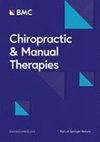Is the use of diagnostic imaging and the self-reported clinical management of low back pain patients influenced by the attitudes and beliefs of chiropractors? A survey of chiropractors in the Netherlands and Belgium
IF 2
4区 医学
Q2 REHABILITATION
引用次数: 0
Abstract
No previous studies have examined the association between attitudes and beliefs of chiropractors and their adherence to low back pain (LBP) guidelines. The aim of this study is: (1) to assess the attitudes and beliefs towards the management of LBP of Dutch and Belgian chiropractors; and (2) to investigate the association of these attitudes and beliefs on the use of diagnostic imaging and on the adherence to diagnostic guidelines and guidelines in the management of patients with LBP. Cross-sectional study using a web-based questionnaire in chiropractic private practices in the Netherlands and Belgium. The survey included sociodemographic characteristics, use of diagnostic imaging, the Pain Attitude and Beliefs Scale-Physiotherapists (PABS.PT) and 6 vignettes (3 acute and 3 chronic LBP patients). We used Latent Profile Analysis (LPA) to categorise the chiropractors into clusters depending on their PABS.PT outcome, whereby the classes differed primarily on the biomedical score. We used linear, logistic, and mixed models to examine the associations between these clusters, and adherence to the recommendations of guidelines on: (1) diagnostic imaging use, and (2) management of LBP (i.e. advice on activity, treatment, return-to-work, and bedrest). The response rate of the Dutch and Belgian chiropractors was 61% (n = 149/245) and 57% (n = 54/95), respectively. The majority of chiropractors scored midrange of the biomedical scale of the PABS.PT. Three clusters were identified using LPA: (1) high biomedical class (n = 18), (2) mid biomedical class (n = 117) and (3) low biomedical class (n = 23). Results from the vignettes suggest that chiropractors in the high biomedical class better adhere to diagnostic imaging guidelines and to LBP guidelines when it concerns advice on return-to-work and activity compared to the other two classes. However, no differences were identified between the classes for treatment of LBP. All chiropractors adhered to the guidelines’ recommendation on bedrest. The high biomedical class demonstrated better overall adherence to the practice guidelines for the management of LBP and diagnostic imaging than the other classes. Due to the small numbers for the high and low biomedical classes, these results should be interpreted with caution.腰背痛患者的影像诊断使用和自我报告的临床治疗是否受脊骨神经科医生态度和信念的影响?对荷兰和比利时脊骨神经科医生的调查
以前没有研究探讨过脊骨神经科医生的态度和信念与遵守腰背痛(LBP)指南之间的关系。本研究的目的是:(1)评估荷兰和比利时脊骨神经科医生对腰背痛管理的态度和信念;(2)调查这些态度和信念与使用诊断成像、遵守诊断指南和腰背痛患者管理指南之间的关系。横断面研究在荷兰和比利时的脊骨神经科私人诊所使用网络问卷调查。调查内容包括社会人口学特征、影像诊断的使用情况、疼痛态度和信念量表-理疗师(PABS.PT)以及 6 个小故事(3 个急性和 3 个慢性腰椎间盘突出症患者)。我们使用潜特征分析法(LPA)根据脊医的 PABS.PT 结果将他们分为不同的组,其中各组主要在生物医学评分上存在差异。我们使用线性模型、逻辑模型和混合模型来研究这些群组之间的关联,以及对以下方面指南建议的遵守情况:(1) 影像诊断的使用,以及 (2) LBP 的管理(即关于活动、治疗、重返工作岗位和卧床休息的建议)。荷兰和比利时脊骨神经科医生的回复率分别为61%(n=149/245)和57%(n=54/95)。大多数脊医在PABS.PT的生物医学量表中得分中等。使用LPA法确定了三个群组:(1)高生物医学等级(18人);(2)中生物医学等级(117人);(3)低生物医学等级(23人)。小故事的结果表明,与其他两个等级的脊医相比,高生物医学等级的脊医在提供复工和活动建议时能更好地遵守影像诊断指南和腰背痛指南。然而,在治疗腰椎间盘突出症方面,两个级别的脊骨神经医师之间并无差异。所有脊骨神经科医生都遵守了指南中关于卧床休息的建议。与其他类别相比,高生物医学类别在腰背痛治疗和影像诊断方面对实践指南的总体遵守情况更好。由于高生物医学等级和低生物医学等级的人数较少,在解释这些结果时应谨慎。
本文章由计算机程序翻译,如有差异,请以英文原文为准。
求助全文
约1分钟内获得全文
求助全文
来源期刊

Chiropractic & Manual Therapies
Medicine-Complementary and Alternative Medicine
CiteScore
3.20
自引率
15.80%
发文量
48
审稿时长
20 weeks
期刊介绍:
Chiropractic & Manual Therapies publishes manuscripts on all aspects of evidence-based information that is clinically relevant to chiropractors, manual therapists and related health care professionals.
Chiropractic & Manual Therapies is an open access journal that aims to provide chiropractors, manual therapists and related health professionals with clinically relevant, evidence-based information. Chiropractic and other manual therapies share a relatively broad diagnostic practice and treatment scope, emphasizing the structure and function of the body''s musculoskeletal framework (especially the spine). The practices of chiropractic and manual therapies are closely associated with treatments including manipulation, which is a key intervention. The range of services provided can also include massage, mobilisation, physical therapies, dry needling, lifestyle and dietary counselling, plus a variety of other associated therapeutic and rehabilitation approaches.
Chiropractic & Manual Therapies continues to serve as a critical resource in this field, and as an open access publication, is more readily available to practitioners, researchers and clinicians worldwide.
 求助内容:
求助内容: 应助结果提醒方式:
应助结果提醒方式:


